The Opulent Eye: 19th century decorative arts at Christie's London in September
Further highlights include a table made by Maison Millet of Paris in the Louis XVI ‘goût Weisweiler’ style of the late 18th century, which was revived from the 1860s by Empress Eugénie (wife of Napoleon III) who was fascinated by Queen Marie Antoinette and an avid collector of Louis XVI items. Estimate: £40,000 – 60,000. Photo: Christie's Images Ltd 2013.
LONDON - Christie’s sale of The Opulent Eye, which will be held on 10 September 2013, offers furniture, sculpture, works of art and clocks from the 19th century. Held twice annually in London and New York The Opulent Eye is the only specialist sale in Europe devoted to 19thcentury decorative arts. The sale reflects the eclectic and opulent styles of the period from the regal grandeur of Napoleon’s Empire to the Art Nouveau of Belle époque Paris. The sale is best understood with reference to the world fairs of the 19th century, from London’s Crystal Palace in 1851 to the Paris Exposition universelle of 1900, which attracted fifty million visitors. These exhibitions were key in promoting excellence in art and creating the international Beaux-Arts style, which was pursued by both Royalty and a new class of global bankers, industrialists and entrepreneurs. Representing the best furniture makers and sculptors of the period, the lots are united by their use of luxurious materials, their rarity and exceptional craftsmanship. Offering 218 lots, with estimates ranging from £2,000 to £150,000, the sale is expected to realise in excess of £2 million.
Leading the sale are four Italian bronze-patinated carved wood figures of Apollo, Mercury, Pallas and Peace (estimate: £150,000 – 250,000). These four sculptures are copies of the bronze statues adorning The Loggetta in Piazza San Marco, Venice. The originals are considered among the most beautiful creations of sixteenth-century Italian sculpture and an extraordinarily example of Sansovino's response to Venice and to the medium of bronze. The importance of the 'Loggetta Gods' for Venetian sculpture cannot be over-emphasised. The present statues, faithfully rendered in wood, capture their vitality and would have been commissioned by a 19th century connoisseur perhaps frustrated at not being able to buy the priceless and unique originals.
A set of four Italian bronze-patinated carved wood figures of Apollo, Mercury, Pallas and Peace, after the models by Sansovino, 19th century. Photo: Christie's Images Ltd 2013.
Apollo scantily clad, holding an arrow in his left hand, a quiver in his right hand; Mercury wearing apetasus, holding a caduceus in his left hand, his right foot resting on Argus's head; Pallas, wearing armour and a helmet, holding a shield in her left hand, a spear in her right hand; and Peace, setting fire to a pile of weapons with a torch; each on a square stepped base with canted angles, the front centred by a mythological scene. Each figure approx. 60 in. (150 cm.) high; Each base: 24½ in. (62 cm.) high (4). Estimate: £150,000 – 250,000
Provenance: By repute, these four figures formed part of one of the Rothschild collections.
Christie's, London, 21 March 2002, lot 300 (£212,750).
Notes: These four sculptures are the exact copy of the bronze statues adorning The Loggetta in Piazza San Marco, Venice.
The four bronze statues can be seen as an extraordinarily example of Sansovino's response to Venice and to the medium of bronze. The importance of the 'Loggetta Gods' for Venetian sculpture cannot be over-emphasized, and within Sansovino's oeuvre, they constitute one of his last, great artistic inventions.
Work on the Loggetta was certainly under way by February 1538 when a large payment was made for marble, columns, bricks and workmen. By 1540 the basic structure of the Loggetta was nearing completion. Little is known about the history of its sculptural complement, but the procurator's accounts show that Sansovino began working on the bronze figures by February 1541 and was actively engaged on them in the following year; by February 1546 the bronzes were installed and Sansovino received a settlement worth 600 ducats for them.
Each bay of the façade had a round-headed arch, the central one serving as entrance and the lateral ones as windows; the four bronze figures of Pallas, Apollo, Mercury and Peace stand in niches between the columns.
Small projects like the lost St. Catherine would have served as preparation for the demanding task of creating models for the Loggetta gods. The casting models for the Gods would have been made by Sansovino in his own workshop and then handed over to professional founders like Minio or Zoppo.
The four sculptures are among the most beautiful creations of sixteenth-century Italian sculpture, certainly the most striking expression of Sansovino's Venetian career.
The Loggetta bronzes remained a criterion for elegant and graceful figures in the eighteenth and nineteenth century, as exemplefied by these fine wooden exemples.
A rare marble statue by Emmanuele Caroni is entitled Schiava alla Vendita (estimate: £60,000 – 100,000). Beautifully detailed in Carrera marble, the statue was shown at the 1861 Italian Exhibition in Florence and is a rediscovered masterpiece by Caroni. It was bought in 1910 by Sir James Liege Hulett of Durban, South Africa. Hulett pioneered the country's sugar industry when he founded the Hulett Company in 1892, which had extensive cane plantations and erected the first sugar mill in 1903. Today, the Hulett Sugar Company is called Tongaat-Hulett Sugar.
An Italian marble figure entitled Schiava alla Vendita, on plinth by Emmanuele Caroni, circa 1861. Photo: Christie's Images Ltd 2013.
unsigned, on a oak panelled plinth with 1861 Florence Exhibition plaque to the front titled 'Albanian Slave by E. CARONI Gold Medal Florence EXHn 1861'. The marble: 33½ in. (85 cm.) high; 42 in. (107 cm.) wide; 22½ in. (57 cm.) deep. The plinth: 30½ in. (77.5 cm.) high; 43½ in. (115.5 cm.) wide; 25¼ in. (64 cm.) deep (2). Estimate: £60,000 – 100,000
Provenance: Dr Theodore Thompson, London.
Sir James Liege Hulett, Durban (d. 1928).
Thence by descent until recently acquired by the present owner.
Literature: A. Panzetta, Nuovo Dizionario Degli Scultori Italiani Dell'Ottocento e del Novecento, 2003, Vol. I, p. 79 andL'Africaine illustrated Vol II., p. 51, pl. 208.
Exhibited: Esposizione Italiana, Florence, 1861.
Notes: A popular subject in 19th century sculpture, Schiava alla vendita shows the influence of Hiram Power's pioneering statue The Greek Slave (1844), and is in itself an early working of the theme later popularised by Orientalist genre. Another contemporary influence might have been the Pas de trois des odalisques, from the ballet Les Corsaire (first presented in 1856). Caroni also found dramatic inspiration for L'Africaine, his most famous composition shown at the Philadelphia Exhibition in 1876, which shares a similar pose. Caroni's style is characterised by exceptionally fine detailing. The realism for which L'Africaine was praised, the feathered headdress and the hinged floorboards upon which she sits, are already evident in Schiava alla vendita, in the embroided arabesques to her turban and the frayed palm matting.
Caroni was born in Rancate in 1826, studied first in Milan under Vincenzo Vela, and then in Florence with Lorenzo Bartolini, where he eventually opened a studio. He received the Cavaliere della Corona d'Italia, and participated in a number of international exhibitions, most notably in the Paris exhibition of 1867 where he won a gold medal for Ofelia. In Philadelphia in 1876, he exhibited The Telegram of Love and L'Africaine (sold Sotheby's, New York, 18 March 1993, lot 179). The Monument to Columbus, erected in 1876 in Philadelphia's Marconi Plaza is attributed to Caroni, 1876.
The lot is accompanied by a letter dated 18 Februrary 1910 from the agent who agreed the sale from Dr. Theodore Thompson, London, to Sir James Liege Hulett, sugar magnate and philanthropist, of Durban, South Africa:
Dear Sir Liege, I enclose a photo of a marble statue which is one of the most notable in this country as you will judge from the understated particulars: "a beautifully sculpted life size statue in Carrera marble". The Albanian statue, a female figure reclining on a straw mat exquisitely. Prized and of charming model by E. Caroni. Width at least 3 ft 4 inches height 2 ft 10 inches. This statue obtained the gold medal at the Florence exhibition of 1861 and is guaranteed to be the genuine and original work. It is stated to have been purchased for one thousand guineas [...] The statue was purchased on the death of the former owner who lived at "Roseheath", Wrotham. It now belongs to a very distinguished physician - Dr. Theodore Thompson - who is a consulting specialist and physician at three of the largest London hospitals. He has moved his house from Haverstock Hill to Portland Place and so cannot find room for it [...]. I can obtain it for the very low sum of 80 guineas. Considering that it is said to have brought 1000 guineas and undoubtedly won the gold medal it is wonderfully cheap. Should you decide not to take it I will advise Dr. Thompson to offer it at Christie's when I am certain it will realise a high figure. Note please how exquisitely the hands are modeled and what grace and sinuosity is shown in the figure.
Further highlights include a table made by Maison Millet of Paris in the Louis XVI ‘goût Weisweiler’ style of the late 18th century, which was revived from the 1860s by Empress Eugénie (wife of Napoleon III) who was fascinated by Queen Marie-Antoinette and an avid collector of Louis XVI items (estimate: £40,000 – 60,000). In the 20th century this table belonged to John Mills, who entertained Hollywood stars and Royalty at his club Les Ambassadeurs, 5 Hamilton Place, Park Lane.
A French ormolu-mounted mahogany and amethyst quartz gueridon by Maison Millet, Paris, late 19th century. Photo Christie's Image Ltd 2013
In the Louis XVI 'goût Weisweiler' style, the circular radiating pattern veenered top above a panelled frieze mounted to four sides with trophies emblematic of the Seasons, one concealing a drawer stamped to the lockplate 'Millet à Paris', on four legs headed by basket-bearing herms running to hoof feet, joined by a raised 'X'-shaped stretcher centred by a neoclassical urn, various mounts stamped to the reverse 'MB';31 in. (79 cm.) high; 30¾ in. (78 cm.) diameter. Estimate: £40,000 – 60,000
Provenance: Bought in the early 1950s by John and Kitty Mills, owners of Les Ambassadeurs Club, 5 Hamilton Place, Park Lane, for their private apartment at the club, and by descent.
Notes: The ormolu mounts to this table epitomize the 'style arabesque' developed by the celebrated Louis XVI maîtreAdam Weisweiler and his marchand-mercier, Dominique Daguerre. The caryatids heading the legs are copied from a table, now in the Louvre Museum, supplied in 1784 by Daguerre to the Queen Marie-Antoinette. Daguerre's bills record that the mounts were designed especially for the Queen.
Another example of this exact model by Millet is not known. However it should be compared to a model of table by Millet's contemporary, Henry Dasson, with herm legs and loop stretcher centred by an urn, of which an example sold Christie's, London, 15 March 2012, lot 135 (£115,250).
Established by Théodore Millet in 1853, the Maison Millet operated until 1902 from premises at 11, rue Jacques-Coeur, Paris, before relocating to 23, boulevard Beaumarchais. Specialising in 'meubles et bronzes d'art, genre ancien et moderne', with an accent on the Louis XV and XVI styles, Millet won awards in Paris and London including a gold medal at the 1889 Pairs Exposition Universelle, a Grand Prix in 1900 and three further diplomes d'honneur and four médailles d'or. In 1902 the firm was authorised by the director of the Palais de Versailles to replicate Marie-Antoinette's celebrated Grand cabinet à bijoux. An auction of the firm's inventory was held in 1906 and they finally ceased trading in 1918.
Elsewhere in the sale is a lifesize figural torchère which once belonged to the Bardou family of Perpignan, France who made the famous ‘JOB’ brand of cigarette papers (estimate: £50,000 – 80,000). The immensely wealthy Pierre Bardou commissioned the architect Viggo Theodor Dorph-Petersen (1851-1937) to build a magnificent château for each of his children. The present torchère was probably made for the most impressive Château d’Aubiry: raised on a marble terrace, it is in the tradition palatiale française combining neo-renaissance and neo-baroque elements to create a fairy tale castle.
A lifesize french ormolu, gilt and patinated bronze figural torchere of Diana, on marble pedestal, cast from the model by Albert Ernest Carrier-Belleuse, last quarter 19th century. Photo: Christie's Images Ltd 2013.
Modelled as a classically-robed maiden wearing a diadem holding aloft a candelabrum with central lamp above five 'S'-scrolled branches, on a Sarrancolin marble cylindrical pedestal with 'JOB' insignia beneath a crown applied in relief; 104½ in. (265.5 cm.) high, the torchère; 47 5/8 in. (121 cm.) high, the pedestal (2). Estimate: £50,000 – 80,000
Provenance: The Bardou family, probably Pierre Bardou (1826-1892) or Justin Bardou (1860-1930).
Notes: Jean Bardou (1799-1852) was the founder of the 'JOB' brand of cigarette papers of Perpignan, France. The firm was expanded by his son Pierre Bardou (1826-1892) and grandson, Justin Bardou 'Job' (1860-1930).
Upon the death of his father, Pierre Bardou established his home and business at rue Saint-Sauveur (today rue Emile Zola) in Perpignan. In 1872 he bought the surrounding properties and built 'l'Hôtel de l'Industrie du Papier a Cigarette', which functioned as both a house and factory. In 1888 Pierre's daughter Jeanne Bardou married a young lawyer and amateur d'art called Jules Pams (1852-1930). He employed the architect Leopold Carlier to remodel the property after which known as the Hôtel Pams. The building is emblazoned with the distinctive emblem of 'JOB' on a shield beneath a crown. The same crest adorns the column and shades of this torchère.
The huge commercial success of papier à cigarettes Job under Pierre Bardou's tenure enabled him to commission the architect Viggo Theodor Dorph-Petersen (1851-1937) to build three magnificent Belle époque châteaux: one for each of his children. In addition to the remodelling of the Hôtel Pams, he built for his daughter Jeanne, the château de Valmy, for his daughter Camille, the château Ducup de St Paul, and for his son, and heir, Justin, the château d'Aubiry.
The château d'Aubiry is the most impressive: raised on a marble terrace, it is in the tradition palatiale française combining neo-renaissance and neo-baroque elements to create a fairy tale castle. It is possible that the present torchère once graced any of the Bardou châteaux, but given the prominence of the 'JOB' brand to the pedestal and shades, it is probable that it was either at the centre of the family business at the Hôtel Pams or belonged to Justin Bardou Job, as principal hier, at the château d'Aubiry.
This model of Diana was first exhibited at the London International Exhibition 1862 on the stand of thebronzier foundeur Denière. Intended to crown a mantelpiece, the 1862 version was presumably smaller than the present lifesize figure. Hargrove illustrates the model and describes: 'Diana twists sharply to the side; her mantle, attached to her tiara, is belted at her waist and again at her hips, baring her upper torso and legs. Well versed in the Renaissance [...] Carrier-Belleuse intentionally alluded to the sixteenth century, but he created a more individual personality here than in the silver fountain that he modelled several years later in the Renaissance style for the Hôtel de la Païva. Diana is fuller, her pose has more real force, and the drapery is more complex' (J. Hargrove, The Life and Work of Albert Carrier-Belleuse, New York, 1977, pp. 204-205, pl. 169). Many of Carrier-Belleuse's figural torchères were produced in editions later in the century by the principal French foundries. However Diana does not appear in the catalogues of Durenne or Val d'Osne. More usually such torchères were produced in cast-iron, whereas the present lot is in more costly bronze. It is possible therefore that the present torchère was a limited, or unique, edition made for the Bardou family.
An Art Nouveau poster advertisement for ‘JOB’ cigarette papers dating from circa 1896, by Alphonse Mucha (1860-1939) will be offered at Christie’s South Kensington, in ‘Graphic Masterworks: A Century of Design’, on Wednesday, 2 October 2013, lot 3 (estimate: £8,000-10,000).

/https%3A%2F%2Fprofilepics.canalblog.com%2Fprofilepics%2F1%2F0%2F100183.jpg)
/https%3A%2F%2Fstorage.canalblog.com%2F03%2F02%2F119589%2F96711876_o.jpg)
/https%3A%2F%2Fstorage.canalblog.com%2F11%2F31%2F119589%2F94773502_o.jpg)
/https%3A%2F%2Fstorage.canalblog.com%2F20%2F83%2F119589%2F94772815_o.jpg)
/https%3A%2F%2Fstorage.canalblog.com%2F26%2F72%2F119589%2F75604929_o.jpg)
/https%3A%2F%2Fstorage.canalblog.com%2F59%2F60%2F119589%2F26458628_o.jpg)
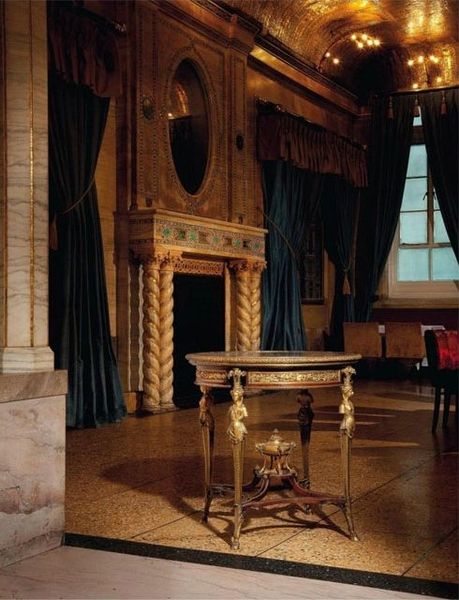
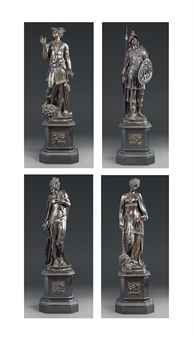
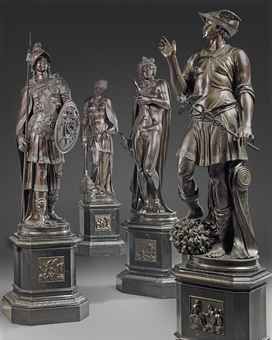
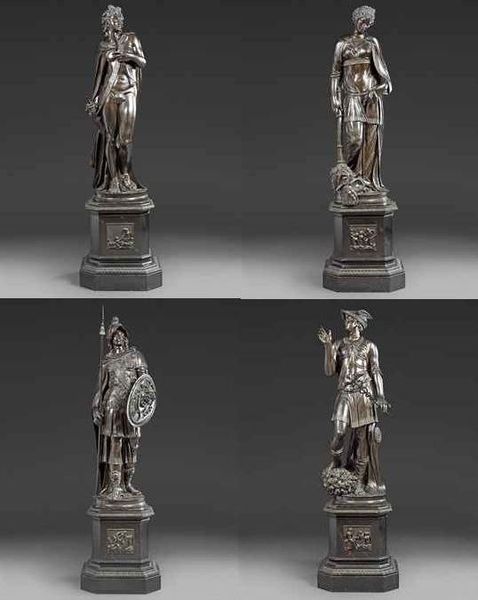
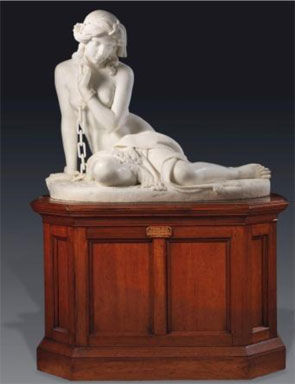
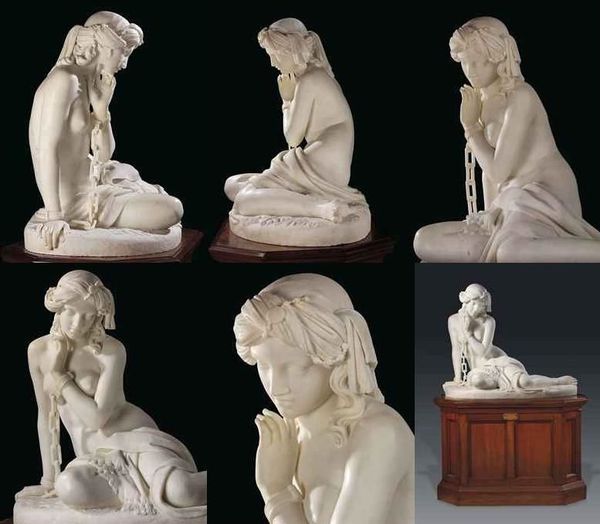
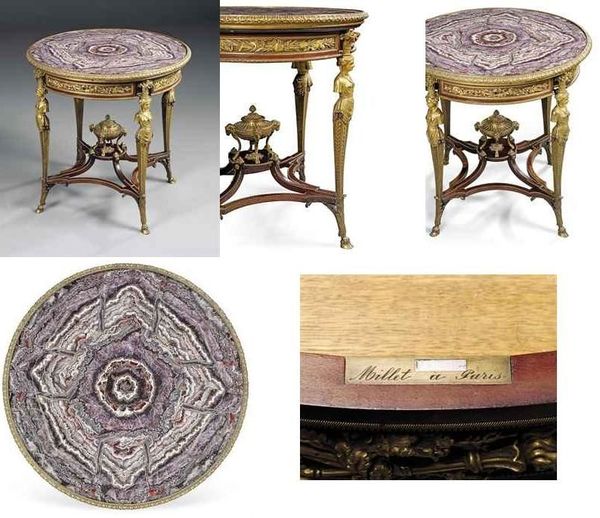
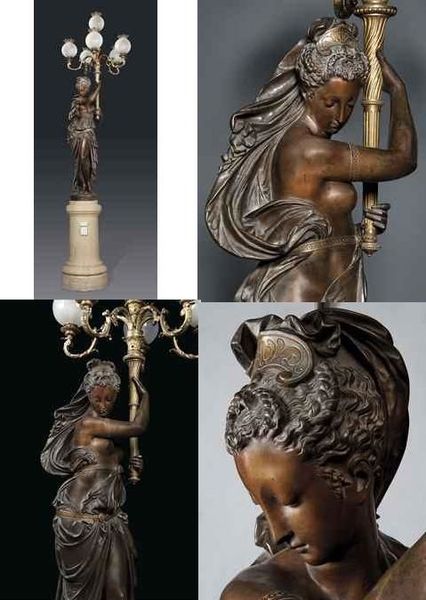


/http%3A%2F%2Fstorage.canalblog.com%2F00%2F00%2F119589%2F129758935_o.jpg)
/http%3A%2F%2Fstorage.canalblog.com%2F29%2F28%2F119589%2F129637299_o.jpg)
/http%3A%2F%2Fstorage.canalblog.com%2F88%2F37%2F119589%2F129631480_o.jpg)
/http%3A%2F%2Fstorage.canalblog.com%2F77%2F79%2F119589%2F129631259_o.jpg)